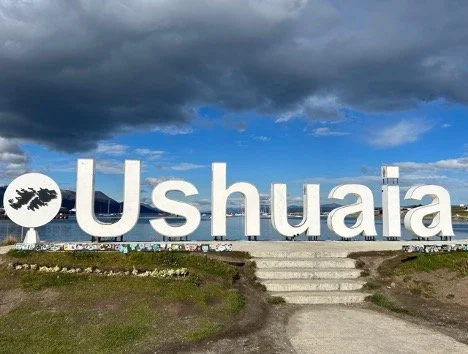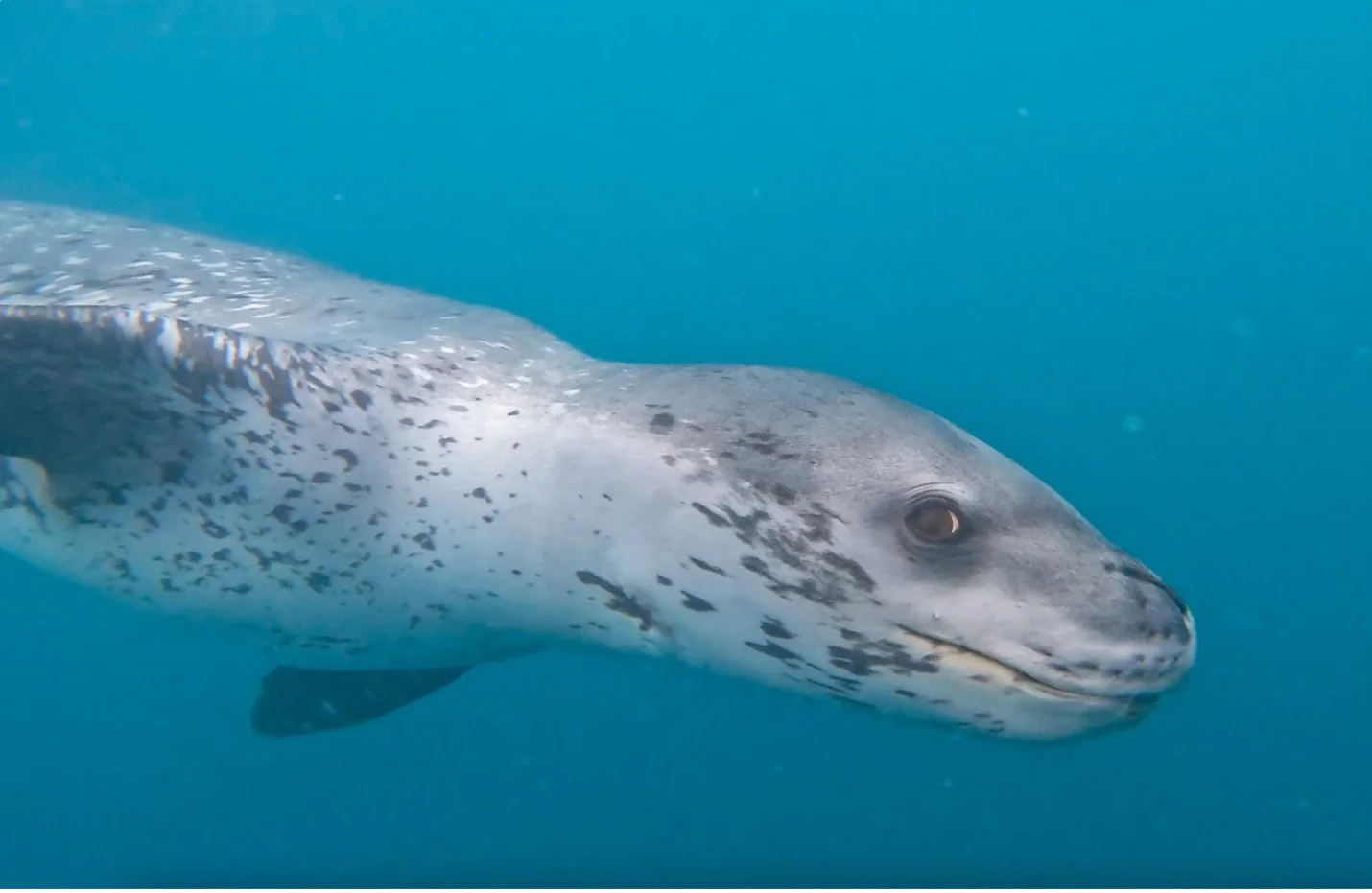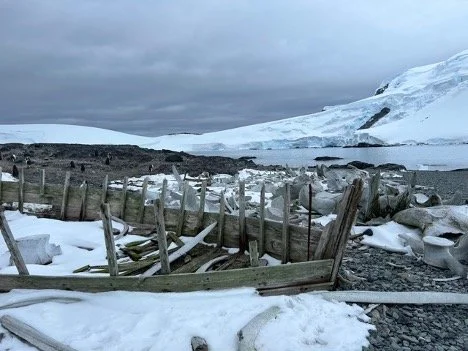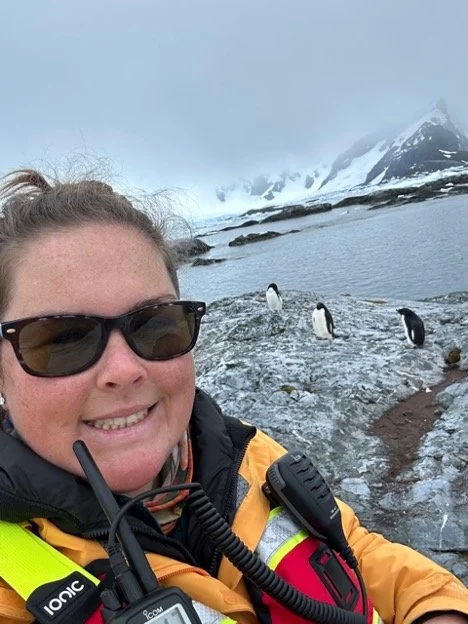Thoughts from the Bottom of the World
By Safina Center Junior Fellow Katlyn Taylor
A small group of Adélie penguins standing on an island in an icy wonderland. ©Katlyn Taylor
I just returned home from a voyage in the Antarctic a few days ago. It still feels surreal. After being on the seventh continent for over two weeks, it’s quite the adjustment to be back in Maui during spring break.
We started and ended our journey from Ushuaia, Argentina. The town motto is: end of the world, beginning of everything. Indeed, it was. We cruised up and down the Beagle Channel and crossed back and forth across the Drake Passage. We explored the South Shetland Islands and the Antarctic Peninsula.
Visitor sign in Ushuaia. ©Katlyn Taylor
We saw more penguins than people the entire time we were there. We had amazing encounters with whales and seals. We cruised among nature’s most amazing sculptures of ice and mountains. There were many days when I would utter out loud “Is this my real life right now?” while standing at the tiller of the zodiac. It was an enormous privilege to guide in this beautiful, icy, remote part of the world.
A curious leopard seal. ©Katlyn Taylor
I had an incredible time at the bottom of the world and feel so honored to have seen it. But I am left wrestling with some big questions now that I am back. It’s an interesting dichotomy to see the signs of an exploitive past in the region and be concerned about humans in the space now as purely visitors. There were remnants of abandoned settlements and shipwrecks, and whale bones scattered across the beaches. Now, having experienced the Antarctic myself - I feel more obligated than ever to protect it. The polar regions of our planet are vital to how it functions.
Whale bones and remnants of a boat at Mikkelson Harbor. ©Katlyn Taylor
More and more people are getting the opportunity to travel to here in recent years. Antarctic tourism has been increasing at a rapid rate. COVID created a brief pause for two seasons, but there have been tens of thousands of visitors this austral summer alone. Some of what is affecting the Antarctic is not the direct reaction of humans in the space, its everything else. The other thing that has been increasing at a rapid rate in the polar regions in recent years? The effects of climate change.
Antarctic sunrise. ©Katlyn Taylor
To a first-time visitor, the symptoms of climate change are almost invisible. But, if you talk to the guides or look at photos from previous seasons, you start to notice them. Sea ice coverage is shrinking and available for less months of the year. This is changing the reliability of Antarctic krill, the driver of the marine food web in the Southern Ocean. Penguins are shifting further south, and whales are changing their distribution and seasonality. Areas that used to be inaccessible due to ice in the winter are now passable all year.
We saw gentoo penguins at every single landing site we visited this trip, something that was not the norm a few years ago. ©Katlyn Taylor
Our actions do not come without consequences. As the polar regions become more accessible to people, how do we protect these incredibly fragile places? IAATO, the International Association of Antarctic Tour Operators, carefully monitors and regulates almost all tourism activity in the Antarctic region. I’m left with the lingering question: Is it enough?
Katlyn with Adélie penguins. ©Katlyn Taylor







